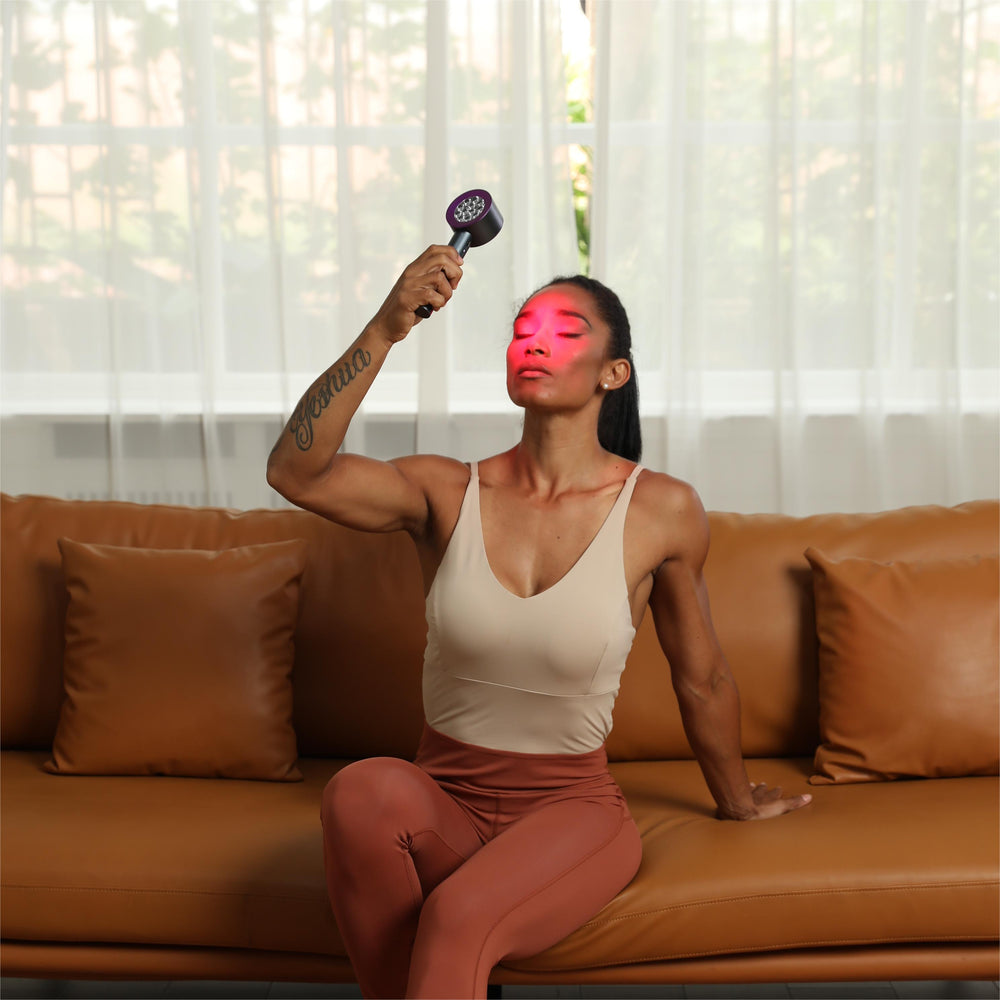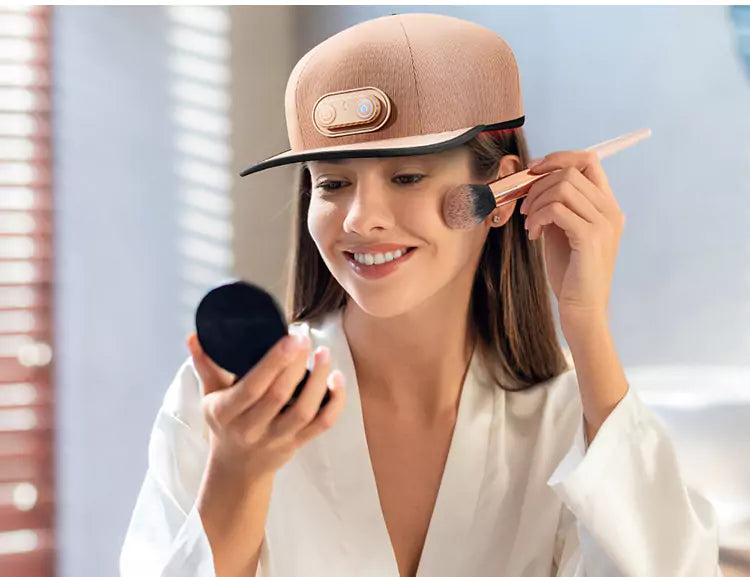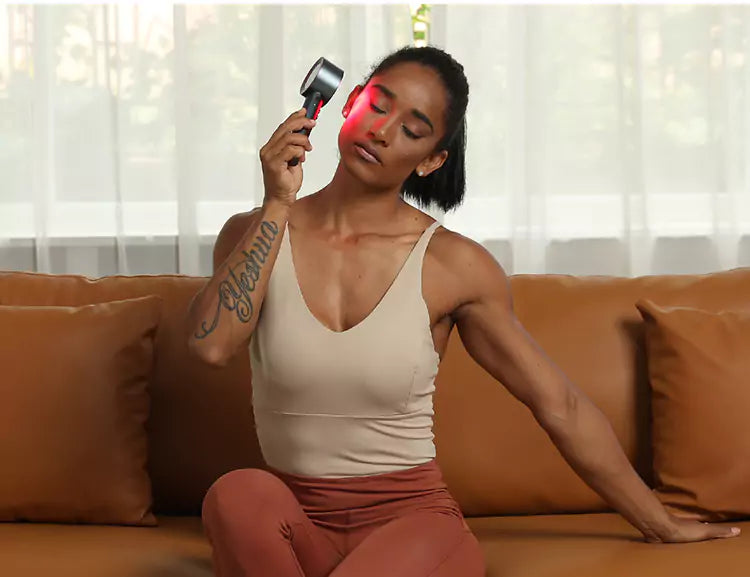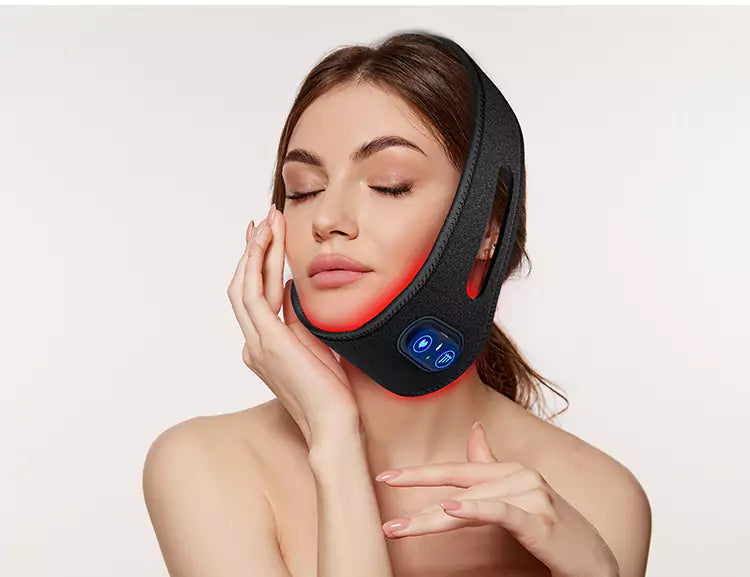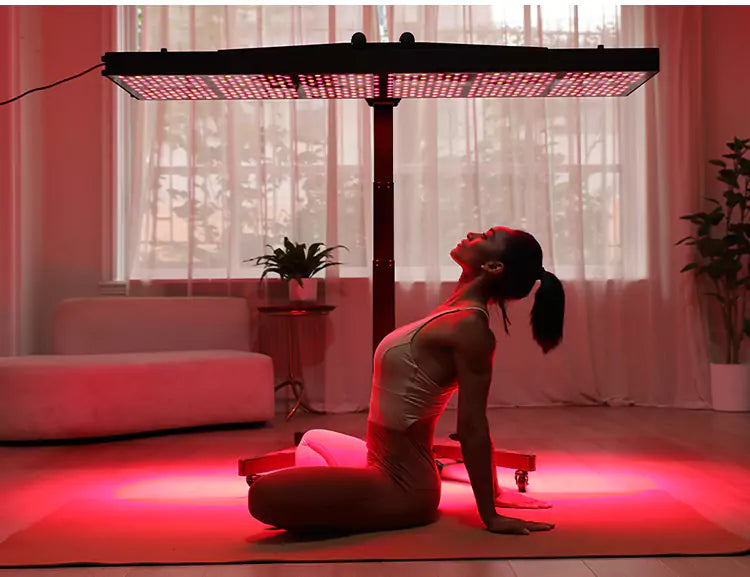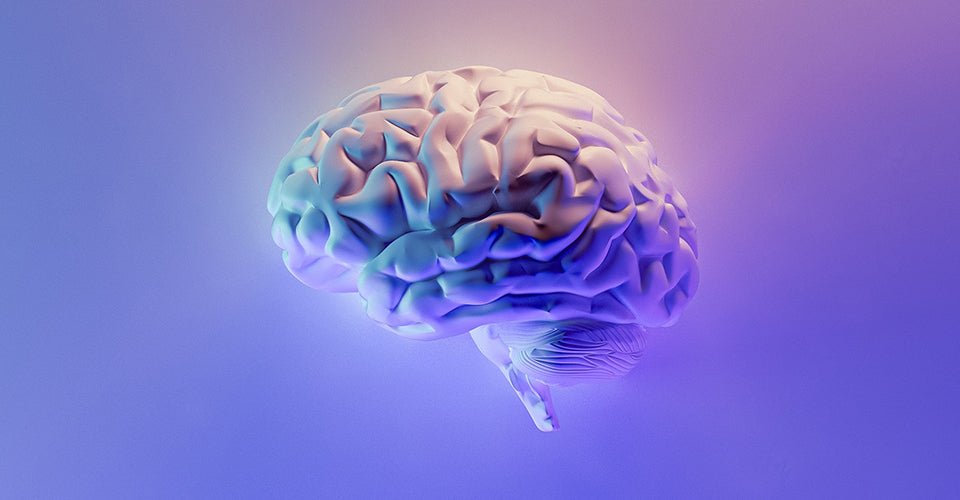Table of Contents
- Does red light therapy work for hair growth?
- Red Light Therapy Promotes Hair Growth
- Red light therapy increases cellular energy
- Red light therapy increases collagen production
- Red light therapy promotes blood circulation in the scalp
- Which type of hair loss is red light therapy more effective for?
- Are there any side effects of red light therapy?
- How to perform red light therapy?
- Additional Resources:
Relevant data shows that about 65% of men will experience hair loss of a certain degree by the age of 35. When they hit the age of 50, more men suffer from hair loss, reaching 85% of them. And it’s not just men who suffer from hair loss, so are women. Among the whole population with hair loss, women account for 40% of them.
There is no doubt that hair loss has a considerable impact on a person's external image and self-confidence. In order to solve this problem, maybe you have tried various hair growth products such as hair growth shampoos, hair growth serums, hair growth oils, etc., and even seek medical treatment and surgical treatment (such as hair transplant). However, the effect of hair growth products is minimal, the drugs often come along with huge side effects, and the cost of hair transplant surgery is even more prohibitive. So, have you ever heard of red light therapy?
Does red light therapy work for hair growth?
Red light is part of the visible light spectrum, which is part of natural sunlight. Scientists have isolated the effects of each wavelength of visible and invisible light. Of all the wavelengths studied, it is widely demonstrated that most red light can be used to support positive biological functions in the human body.
Red light therapy, or low-intensity light therapy (LLLT), is an experimentally proven and effective treatment for hair loss. Back in 1960, a Hungarian scientist shaved the back of mice, and after a series of irradiation treatments with red light, the mice grew thicker hairs around the shaved area than before. This scientific discovery brings significant innovation and hope for the treatment of hair loss in the future.

The light used for red light therapy consists of red light and near-infrared light (NIR), which have the longest wavelengths of all light. The wavelength range of red light is 630-700nm, while the wavelength range of near-infrared light reaches 700-1100nm. Among them, red light is visible, and near-infrared light is invisible. According to a relevant research, red light in the range of 630-660nm has the best effect on hair loss treatment.
Red Light Therapy Promotes Hair Growth
Our hair falls out naturally every day, and it is normal to lose 60-100 hairs every day out of hundreds of thousands. The hair falls out, and the follicles are still there and working properly, so there is no problem with hair loss. But when the growth rate of new hair is slower than the rate of hair loss, or the newly grown hair is thin and soft, or even no new hair grows at all, then there is a problem with the hair follicle and it might stop working. So it can be seen that hair follicles are especially important for hair growth, and the activity of hair follicles and whether they are in a normal state determine the growth of new hair.
Therefore, in order to ensure the normal function of the hair follicle, it is necessary to make some cells or other substances in the hair follicle stay in a healthy and favorable state first. To achieve these goals, red light therapy plays a key role here.
Red light therapy increases cellular energy
Exposing the skin to red light allows it to penetrate the skin and reach the base of each hair follicle, thus increase cellular energy. The following explanation can show how the energy is increased: mitochondria are the energy-producing organelles within cells, and when photons are absorbed by the skin and reach each cell, they interact with light-sensitive receptors in the mitochondria, which then stimulate the production of the cell's main fuel, adenosine triphosphate (ATP).
When energy is plentiful, healthy cells have better function and therefore function better, constantly reproducing more healthy cells and protecting themselves from oxidative stress and any environmental pathogens.
Inflammation may interfere with normal cell energy production and function, and red light therapy can effectively reduce it. At the same time, red light therapy can also inhibit cell death. The slowing down of cell death means healthy cells have more time to perform their functions. Moreover, the health state and function of cells can influence each other, thereby affecting the whole organ or system.
Red light therapy increases collagen production
Collagen is another protein found in the human body, and red light therapy helps increase the production of this protein. Collagen is not present in hair, but according to a research[1], collagen acts as an antioxidant to fight free radical damage . Harmful compounds such as free radicals are produced in the body due to factors such as stress, environmental pollutants, hair loss caused by chemotherapy, or poor nutrition. Free radicals damage the cells in the hair follicles, preventing them from growing hair. While the increase in collagen reduces oxidative damage and further supports the normal function of hair follicles.

Red light therapy promotes blood circulation in the scalp
Red light therapy has been shown to promote the production of new capillaries, which improves blood flow to the scalp and brings oxygen and nutrients to the cells.
At the same time, increased blood flow also brings white blood cells to the scalp, which is especially important if your hair loss problem is caused by disease or abnormal inflammatory response that prevents your hair follicles from functioning properly.
Red light therapy not only improve blood flow in the scalp, but also in the lymphatic system, which is very useful for removing unwanted substances that can cause damage to hair follicles.
It can be seen that better blood circulation is closely related to the health and thickness of hair. Therefore, it is necessary to massage the scalp regularly to promote blood flow in the scalp. Combining scalp massage with red light therapy double stimulates scalp blood circulation and awakens dormant hair follicles, further boosts cellular energy, makes hair grow thicker and healthier, and protects you from hair loss.
Which type of hair loss is red light therapy more effective for?
There are many reasons for hair loss. There is genetic hair loss, which is known as androgenetic alopecia (AGA). In addition to this, chronic stress, chronic inflammation, malnutrition, hormonal changes (including those caused by pregnancy), and autoimmune diseases such as thyroid disease, lupus, ringworm, alopecia areata, and lichen planus can also cause hair loss.
As a safe, non-invasive and painless treatment, red light therapy has been extensively researched and proven to be effective in the treatment of genetically induced hair loss.
Some trials confirming the effect of red light therapy for hair growth
A study in 2014[2], 42 women aged 18-60 with androgenetic alopecia (AGA) were divided into two groups , one group (24 people) received red light with a wavelength of 655 nm every other day for 16 weeks, and the other group (18 people) received non-red light treatment for the same frequency and duration. The final results showed that women who received red light therapy had significantly gained more hair than women who did not receive red light therapy, and none of them experienced adverse side effects.
Another study in 2014[3], 128 men and 141 women, divided into active and control groups, were randomized to be treated with red light therapy 3 times per week times for 26 weeks. The final results showed that compared to the control group, hair thickness and fullness were improved in the active group regardless of gender and there were no adverse effects.
A study in 2018, 100 men with androgenetic alopecia (AGA) were in the test. Participants received red light treatments for 30 minutes on one side of the head three times a week for 24 weeks, and a sham treatment on the other side of the head. The results showed a significant increase in the number of hairs with higher level of thickness on the side treated with red light and no adverse side effects were observed.
Another study in 2018, 50 AGA patients aged 14-45 years were divided into a case group and a control group to participate in the test, in which the case group received a combination of topical minoxidil solution and red light therapy, while the control group received only the same topical drug. And the result showed that the case group had a higher recovery rate from AGA and improved hair density and diameter compared to the control group.
Are there any side effects of red light therapy?
In many studies on red light therapy for hair loss or for hair growth, there are basically no side effects found.
Some people with sensitive skin may experience temporary redness or tightness in the skin after using red light therapy, but this is not a symptom of skin burns caused by overexposure to red light.
Red light therapy does not cause burns. Skin redness and tightness may be due to increased blood flow to the treated area, and these symptoms subside within minutes of red light treatment.
How to perform red light therapy?
Some hospitals and physiotherapy centers out there will provide red light therapy at high expense. And the treatment of red light therapy for hair loss often requires a long course of to achieve the expected result, so the cost of the entire course of treatment can be quite a lot.
Nowadays, red light therapy is mostly conducted through low-risk devices. So it is feasible and safe for individuals to operate devices at home to perform red light therapy. Therefore, why not consider purchasing a red light therapy device for home treatment?
Click to learn about Photon Therapy Cap For Hair Growth.
Additional Resources:
[1] Chang-Feng Chi, Antioxidant and Functional Properties of Collagen Hydrolysates from Spanish Mackerel Skin as Influenced by Average Molecular Weight. Molecules. 2014 Aug; 19(8): 11211–11230. Published online 2014 Jul 31. doi: 10.3390/molecules190811211
Access version:
www.ncbi.nlm.nih.gov/pmc/articles/PMC6271556/
[2] Raymond J Lanzafame, The growth of human scalp hair in females using visible red light laser and LED sources. Lasers Surg Med. 2014 Oct; 46(8): 601–607. Published online 2014 Aug 13. doi: 10.1002/lsm.22277
Access version:
www.ncbi.nlm.nih.gov/pmc/articles/PMC4265291/
[3] Raymond J Lanzafame, ND, MBA,1 The growth of human scalp hair in females using visible red light laser and LED sources. Lasers Surg Med. 2014 Oct; 46(8): 601–607. Published online 2014 Aug 13. doi: 10.1002/lsm.22277
Access version:
www.ncbi.nlm.nih.gov/pmc/articles/PMC4265291/
